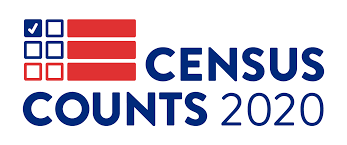Download the PDF
Click HereThis guide is designed to help community-based organizations ensure that their census advocacy and outreach campaigns are accessible to everyone.
According to the Census Bureau, there are 56.7 million people with disabilities in the U.S., totaling approximately 19 percent of the U.S. population not living in institutions. Some believe that number is closer to 25 percent—one in four Americans. Nearly 20 percent of people with disabilities in the U.S. live in neighborhoods that are considered hard to count (HTC) by the Census Bureau.
The Census Bureau has stated that the 2020 Census will be fully accessible to everyone. The Bureau has stated that it will be conducting checks to ensure that all of its electronic and information technology systems comply with the law, including Section 508 of the Rehabilitation Act. There will be an American Sign Language video guide available to help people who choose to respond online. In addition, Braille and large-print guides will be available to assist with self-response by mail. The Census Bureau’s telephone contact centers will utilize Telephone Device for the Deaf (TDD) technology at 844-467-2020 to conduct interviews and answer questions by phone. For more information about filling out the census questionnaire, please go to the “Assistance with filling out the form” section of this Toolkit.
Include Everyone, Count Everyone
The Census Bureau is making sure the 2020 Census is accessible. It’s up to stakeholders to make outreach efforts and materials are fully accessible as well.
For example, consider whether a 2020 Census event is being held at an accessible location or whether it will be inaccessible to those with mobility issues. Ensure 2020 Census handouts be available in accessible formats (for example, large font, Braille) and be accessible to people who are visually impaired. Do not use language that assumes someone with a developmental disability cannot complete the questionnaire without someone else completing it for them.
Physical Accessibility
Be sure to host any 2020 Census event at an accessible location. If parking is provided, wheelchair-accessible parking should be available with an accessible entrance to the facility (for example, if there are stairs to the entrance be sure ramps or lifts are available). Within the facility, be sure to have an accessible room and an accessible path to the room, along with accessible microphone stands or microphones that participants can use.
Auditory Accessibility
When hosting 2020 Census events, use microphones when speaking, and ask participants to do the same. Face participants when speaking, so people who read lips can understand you. If an individual uses an interpreter, speak clearly and provide time for the interpreter to sign, and don’t forget that when conversing with someone who uses an interpreter, speak directly to the person, not to the interpreter. Also consider hiring an interpreter to ensure that deaf and hard-of-hearing attendees can fully participate.
Videos
All 2020 Census outreach videos should have captions in order to be accessible. There are several ways to provide captions, including open captions, those that are burned in or embedded onto the video itself, accessible transcripts of the videos, or even simple YouTube captions, but make sure they have been edited for accuracy first. If you want to learn more about how to caption videos, check out the Rooted in Rights video “Captions in a Couple Minutes” here.
Visual Accessibility
Stakeholders might want to share documents with people to encourage them to participate in the 2020 Census. These documents should be available in various accessible formats, such as standard size font (12 point), large size font (18 point), Braille, and perhaps even electronic versions for people who use screen readers. Consider having flash drives available for anyone who might need an electronic copy or offer to email them a copy directly. You should use a sans serif font, such as Arial, Calibri, Helvetica, Tahoma, and Verbena. Please note that Times New Roman is not an accessible font.
Word and WordPerfect
Most documents created in Word or WordPerfect are accessible to screen readers if they only contain text (that is, no photos, graphs, or clip art). The use of any non-text media in an accessible document makes the document inaccessible. This can be resolved by including a text description to any non-text media (for example, alt text).
PDFs
Documents converted to PDFs are not always accessible. To check whether a PDF is accessible, click on the “Select Text” icon. If you can select the text with your mouse, then the document is accessible. If you are unable to do so, it’s not accessible.
Website Accessibility
Be sure to make any 2020 Census website accessible. People should be able to navigate all your website’s menus and all of its interactive functions without a mouse and be able to use assistive technology such as a screen reader. Create content with clear layouts that make it easy for users to see and hear content. Also be sure the website can be accessed and read with various assistive technology devices that people might use such as screen readers. Try to follow the Web Content Accessibility Guidelines (WCAG) 2.0.
A Word about Language
“People-first” language is generally preferred when talking about disabilities. This approach was developed to prevent people from being described in dehumanizing ways. Examples of “people-first” language include: “an individual with a disability,” “a person who has a cognitive disability,” “people [living] with mental illness,” and “persons who have a psychiatric disability.” But it’s also good to be aware that there is a growing push among some advocates for “identity-first” language. For example, some believe that “autistic person” better reflects the fact that autism is central to a person’s identity and the way they interact with the world than “a person with autism” does. If you are not sure what term to use, by all means, ASK.

